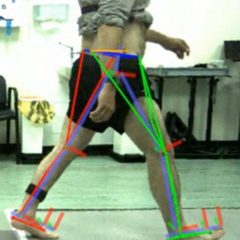Earables
** Earables Movement Study **
We are currently recruiting participants for our study which aims to establish the relationship between head movements and lower body motion patterns during daily tasks, with the aim to improve the monitoring of balance and neurological conditions.
For more information and to sign up, visit the Earables Movement Study tab .
Research Goal
We are harnessing information from ear-based wearable sensors (earables) to analyse human motion, intention and brain state, with the goal to improve the treatment of neurological and balance disorders.
The ear is in a prime position to obtain brain activity (EEG), eye movement (EOG), heart rate (ECG) and head movement data, and hence has been referred to as the "USB of the body". By combining all this information, we can gain deep understanding into both voluntary and involuntary behaviour, with the potential to provide effective and continuous monitoring of a range of health conditions.
Our System
 | We have designed a custom 3D-printed headset which sits comfortably over the ears. It contains two 9-axis inertial measurement units (IMUs) which measure the acceleration and rotation of the head. Two electrodes lie in contact with the skin, measuring physiological signals such as EEG, EOG and ECG. Using PEDOT:PSS dry electrodes means that we achieve high signal quality without the need for conductive gel. |
Projects
Measuring Human Gait Using Earables
 | In collaboration with Dr. Tom Stone in the Human Motion Laboratory, we are investigating how head movement relates to lower limb motion during common functional tasks such as walking, sitting and interacting with objects. We are comparing the gold-standard positional information provided by the optical motion capture system with the signals from our earables headset to establish temporal-spatial parameters (such as stride times and symmetry), kinematic (such as joint angles) and kinetic (force) information. This research provides a path both towards high level day-to-day monitoring of gait and more efficient implementation of clinical balance assessments. |
Gaze-in-Space
 | The combined movement of the eyes and head (gaze) provides insight into the nature of a person's attention and intention. We are developing a gaze-in-space tracking system to model the movement of the eyes and head during locomotion by fusing the data from the IMUs and electrodes. This tool opens the possibility of investigating how people navigate complex and free living environments, respond to unexpected stimuli or interact socially with others, all of which are integral parts of our daily lives. |
